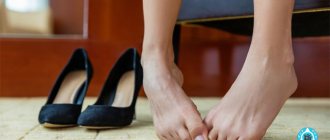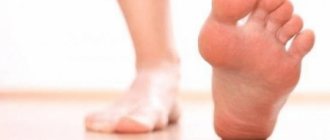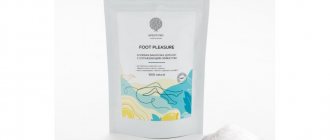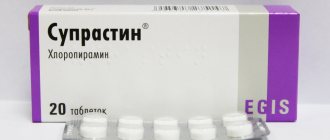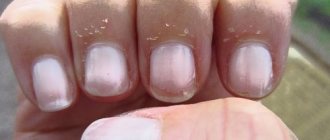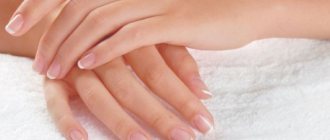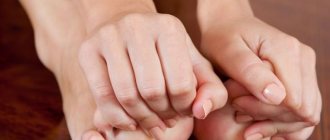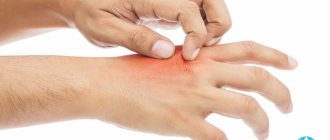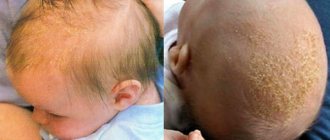Foot skin problems can be solved by a pedicurist or a qualified podiatrist. The skin is the largest and most vulnerable organ. Covers are constantly in contact with an aggressive environment and are exposed to mechanical and chemical influences. The body takes this into account and skin regeneration is one of the fastest processes.
We must help our body with proper care, nutrition, and hydration. Unfortunately, not everyone thinks about the importance of regular and competent care. The result is skin problems. Let's look at what problems there are and how to fix them.
Every day, feet are exposed to constant high loads. This is aggravated by the use of low-quality, incorrect and restrictive shoes and socks made of synthetic fabrics. As a result, foot skin pathologies occur in the majority of the population. An indifferent attitude towards cracked heels, dry and wet calluses, and regular peeling of the skin can lead to serious chronic diseases.
Many foot skin problems can be eliminated by a podiatrist. He will provide proper care, treatment of the skin, its hydration and nutrition, and give recommendations for prevention at home. If you do not use the services of a podiatrist in a timely manner, then in the future you will need the help of a surgeon - do not complicate the situation, take preventive measures in a timely manner.
Main skin problems on the feet
A podiatrist is regularly contacted with the following foot skin pathologies:
- calluses;
- cracks of different depths;
- dry skin;
- hyperhidrosis;
- corns;
- hyperkeratosis.
The specialist’s task is not only to identify the presence of pathology and select a method for eliminating it, but also to determine the causes of its occurrence - this will help carry out prevention and prevent the occurrence of pathologies in the future.
What are foot cracks?
Cracks in the epidermal layer appear on the outer skin and can extend deep into the dermis. Heels are a typical localization area.
Main causes of cracks
- leg injuries and mechanical damage;
- improperly performed pedicure;
- lack of regular skin care;
- dry skin;
- diseases of the digestive system;
- past fungal diseases;
- diabetes;
- taking antibiotics;
- psoriasis;
- dehydration of the body;
- strict diet without supervision by specialists;
- thyroid disease;
- hormonal changes, taking hormonal medications.
The appearance of cracks in the legs can be seasonal or chronic.
A pedicurist will be able to cope with cracks, but an integrated approach requires the help of an endocrinologist, dermatologist, gastoenterologist or immunologist. The master recommends specialists from whom you can get advice.
According to statistics, 70% of cracks are infected with fungi. It is recommended to visit a dermatologist, do tests and identify the type of fungus. This will help you choose a course of treatment for quick and safe skin recovery.
The specificity of fungal cracks is a green or brown tint. A pedicurist immediately sends a client with such a pathology to dermatologists. It is not possible to cure the infection yourself without determining the type of fungus at home. The help of a cosmetologist will not help either - removing the area without an integrated approach can lead to the spread of the disease.
Allergy
Peeling of the skin on a child’s feet is possible due to allergic reactions, atopic or contact dermatitis.
Irritation is caused by:
- washing powder that you use to wash children's socks or tights;
- baby creams, care oils;
- clothing made from synthetic fabrics;
- highly allergenic foods (citrus fruits, milk, chocolate, eggs, fish);
- insect bites;
- medicines, sweet syrups containing chemical flavors, dyes, flavoring additives.
Allergic reactions are often accompanied by severe itching. Parents should ensure that the child does not scratch the skin, otherwise an infection will occur. Antihistamines help cope with itching, redness, and inflammation. For effective treatment, it is important to identify and eliminate the allergen.
Treatment of cracks during pedicure
Hardware dry and combined pedicures work well with cracks. To eliminate pathologies, it is not recommended to carry out intensive softening by wetting. With deep tears, it is difficult to work with skin that has collected water.
Deep cracks are removed in 3-7 sessions. The procedure necessarily ends with treatment with nutritional compositions and healing agents. The client is given recommendations for care and, if necessary, demonstrated care procedures.
Main stages
treatment of cracks during combined pedicure:
- Treatment with antiseptic compounds.
- Treatment with keratolics, which contain enzymes and urea.
- The treated area is covered with a napkin for 5-10 minutes.
- Hardware processing with cutters of different hardness. Recommended tips are 100, 150 and 280 grit.
- Processing with a diamond cutter - the master forms a truncated cone in the direction of the crack. This helps open the crack and remove dry edges.
- Removing dust from feet using antiseptic compounds.
- Application of urea or wax based compounds that promote rapid healing.
During a pedicure, the area of skin affected by hyperkeratosis is usually removed.
At home, to increase the rate of acceleration, cracks are treated overnight with wax-based products. During the day, feet are regularly moisturized with nourishing creams. If wax-based products are not available, you can use Vaseline. To improve effectiveness, after treatment overnight, the cracks are covered with polyethylene and a cotton sock is put on.
Prevention
Everyone knows that a disease is easier to prevent than to treat. To keep the dermis on your fingers in order, do not forget about these tips:
- cleansing and moisturizing - daily procedures;
- wash your feet with warm water and rinse with cold water;
- At night, lubricate your feet with a high-quality moisturizer;
- if cracks appear between your fingers, treat them with hydrogen peroxide;
- wear loose and high-quality shoes;
- do not abuse high heels;
- Pamper your feet with baths with chamomile, calendula, and sea salt.
If you regularly experience itchy soles, be sure to read this article. This material will be useful to you.
Calluses: causes and methods of removal
A callus is formed by compaction of dead skin cells. They are distinguished by strictly defined and clearly visible boundaries, and can be dry or wet.
The main reasons for the formation of calluses:
- wearing uncomfortable and tight shoes;
- hard backs of shoes;
- wearing shoes without socks;
- irregular foot skin care;
- foot deformity;
- lack of care procedures.
Most calluses cause pain, discomfort, and are a source of infection.
Core calluses cannot be eliminated at home; a visit to a podiatrist is necessary. The pathology forms in the area of the fingers or foot and has a deep, pinpoint root canal. These calluses are often affected by fungus.
Effective elimination is only possible with an understanding of the cause of the formation. Dry calluses are removed by a pedicurist, who pre-soaks the skin and removes the growth with a nail file. Wet calluses require an exclusively individual approach.
How does gangrene manifest in an elderly person?
The clinical symptoms of the disease depend on the nature, extent of the lesion, the nature of its occurrence, the localization of the lesion and the rate of development of gangrenous disease in an elderly patient. The manifestations of wet and drying gangrene also vary.
Symptoms of the dry type, characteristic of elderly patients with poor health, low body weight, and prone to dehydration:
- acute pain localized in the leg; in the initial stage, no change in skin color is noted;
- the pulse in the affected area is difficult to palpate, the leg becomes pale and cold, and later begins to turn black;
- limited area of the lesion with pronounced demarcation - gangrenous lesions often start from the fingers, spread higher and end in a healthy area with normal blood circulation;
- as the disease develops and symptoms increase, the tissues decrease in volume, gradual drying, wrinkling and mummification of the affected leg is observed;
- sensitivity decreases, movements become difficult;
- fabrics gradually turn black - color from brown to black;
- dry type is usually not accompanied by infection;
- the general condition of the patient is satisfactory, symptoms of intoxication are mild or absent;
- if it is not possible to perform surgical amputation, the affected area is rejected on its own.
Manifestations of the wet type, characteristic of older people prone to obesity:
- at the beginning of the disease, the skin becomes pale in color, the affected area becomes cold as a result of poor blood circulation;
- the pulse in the arteries can barely be felt, the venous network appears, and the leg visually becomes swollen;
- characteristic red gangrenous spots appear on the skin;
- as inflammation increases, healthy tissues are involved in the process; there is no clear boundary between healthy and areas that have already turned black;
- there is a strong fetid odor of decaying flesh, the spots become black;
- unlike the second type, the fabrics do not dry out and remain moist;
- as a result of an increase in painful symptoms, the condition of the sick person worsens, and intoxication of the body is observed;
- the pain is acute, intense, conventional painkillers do not help;
- body temperature is high, blood pressure drops, pulse quickens;
- loss of appetite, the patient refuses water;
- without proper therapy, sepsis and inevitable death of an elderly patient occurs.
There are a number of symptoms, the development of which indicates a predisposition and the initial stage of the disease - cold lower or upper extremities regardless of the time of year, frequent cramps, fatigue when walking, changes in the sensitivity of the legs, poorly healing wounds that may turn black over time, etc. Such signs cannot be ignored; immediate consultation with a specialist is required for consultation and diagnosis of the disease. It is important to remember that gangrene develops rapidly and in a short time can lead to disability and death in an elderly patient.
Corns: features and treatment
Corns resemble calluses, but are irregular in shape, large in size, have jagged edges, and are highly dense. The main means of combating corns is a combined pedicure. Cosmetologists use keratolic agents, which have a softening effect, and devices with attachments of varying degrees of abrasiveness.
The main causes of corns:
- low-quality, uncomfortable shoes;
- foot deformity;
- improper regeneration of the skin of the foot;
- dehydration and strict diets.
The regular appearance of corns, regardless of the shoes used, is a reason to visit an orthopedist.
The main stages of eliminating corns:
- visiting a pedicurist who will file the damaged area. The procedure is performed in several stages;
- daily home care;
- wearing shoes with orthopedic insoles;
- scheduled visit to a podiatrist.
With the help of a hardware pedicure, you can remove a small corn in one session. Large and dense ones are removed gradually, since if a significant area is removed in one procedure, the regeneration process is activated and the corns increase in size.
What is hyperhidrosis
Hyperhidrosis is increased sweating, which leads to the formation of skin pathologies. An area with constant high humidity and a temperature comfortable for the growth of bacteria is created in the foot area. This causes an unpleasant odor and peeling of the skin in large areas.
The main reasons for the development of hyperhidrosis:
- disorders of the thyroid gland;
- wearing uncomfortable shoes with poor ventilation;
- the use of low-quality creams based on synthetic bases that form an airtight film on the surface of the skin.
The main problem with hyperhidrosis is thick and swollen skin. It is difficult to process using hardware methods. To relieve the main symptoms, it is recommended to sprinkle the damaged areas with baby powder or talcum powder.
To treat hyperhidrosis, alcohol-based antiseptic formulations are used. The treatment can be done in a beauty salon. After hygienic treatment, the feet are wiped and treated with talcum powder. Prepared feet are processed using hardware methods using cutters with a hardness of 100-280 grit. After completing the procedure, the master will definitely give recommendations.
General recommendations:
- use a deodorant recommended by a specialist;
- wear shoes and clothes made from natural materials;
- take good care of your shoes;
- Perform regular foot hygiene procedures at least twice a day.
- Pay special attention to the condition of the insoles.
Folk remedies to combat peeling skin
Boric acid: use of powder, soap and alcohol solution
If the skin peels off between your toes, you can eliminate the pathology using folk remedies. This is a very reasonable decision, because most medications have contraindications for use, and traditional medicine, as a rule, is based on herbal components.
The skin on your toes will regain its former health if treated with olive oil mixed with tea tree oil. Tea tree has anti-inflammatory and antifungal properties, so it will disinfect the epidermis, and olive oil will saturate it with essential microelements and soothe irritation.
In order to get rid of the top flaky layer, you can use a treasure made from crushed oatmeal and soda. After the components are mixed together, they are applied to the skin between the fingers, already moistened with water, and massaged. After the procedure, the skin is treated with butter and honey.
The easiest way to moisturize the dry, flaky skin between your fingers is to rub it with cucumber or aloe pulp.
If you encounter a fungus between your fingers that causes peeling, chop the garlic and apply the paste to the affected area for twenty minutes. It is important not to overdo it, as there is a risk of getting burned. If you do everything correctly, your skin will recover after just three procedures.
Hyperkeratosis, dryness and flaking
Hyperkeratosis is a thickening of the stratum corneum. A layer of 1 to 10 mm is formed on the feet. The thickening is aggravated by the appearance of cracks, chronic formation of calluses and corns.
Excess weight, poor hygiene and the use of shoes made of synthetic materials are the main triggers of hyperkeratosis, among other reasons:
- genetic factor;
- age-related changes in the body;
- fungal infection;
- improper care of the skin of the feet;
- disturbances in the functioning of the endocrine system.
You can remove the effects of hyperkeratosis in a beauty salon. The pedicurist uses a combined technique, which includes the use of softeners and hardware treatment.
The maximum effect when removing rough skin is achieved when using cutters with an abrasiveness of 100-280 grit. The master gradually reduces the abrasiveness using different attachments.
Recommendations:
- using comfortable shoes;
- regular foot care with moisturizing creams;
- use of socks and shoes made from natural materials;
- regular visits to the podiatrist.
To combat dryness and flaking of the skin, urea-based products are used. The beauty parlors offer a procedure called cold paraffin therapy. A good effect is achieved by using wax applications and nourishing masks.
It is important not only to eliminate a cosmetic defect, but also to identify the causes of its occurrence and ensure proper prevention. If necessary, the podiatrist will give recommendations and refer you for consultations to specialized specialists to identify the cause of the defect.
Skin diseases
Skin problems on the legs can be the result of dermatological diseases or infections.
These include:
- Eczema. A hereditary chronic disease, the development of which is provoked by allergies, reduced immunity, stress, and infections. With eczema on the feet, the skin becomes very dry, itchy, red, and covered in a rash;
- Psoriasis. Chronic non-contagious disease with genetic predisposition. The impetus for the appearance of symptoms can be a change of season, rubbing the skin with clothing, infections, or certain medications. Psoriasis causes scaly, inflamed red patches;
- Lichen. An infectious disease caused by various fungal or viral pathogens. There are 5 types of lichen. Ringworm (microsporia) is usually found in children. Children of preschool age and primary schoolchildren who come into contact with street cats or dogs get sick more often. This type of lichen appears as pink spots with a flaky center.
Avoid serious problems
A wide range of dermatoses develops in patients with diabetes mellitus. A number of pathologies are harbingers of this disease, others are a consequence. In total, up to 30 types of dermatoses with different clinical pictures are registered in diabetes mellitus.
All of the above diseases require professional and long-term treatment. It is recommended not to let your feet get into a condition that would require going to a hospital or clinic. It is necessary to regularly engage in the prevention of foot skin diseases. To do this you need:
- take care of your feet using products recommended by a cosmetologist;
- keep feet clean and dry;
- wipe the skin between the toes well after hygiene procedures;
- change socks twice a day, do not use synthetic shoes;
- wear only personal items.
People with chronic diseases are recommended to visit a podiatrist once every six months to receive professional care procedures.
Intestinal disorders
The cause of peeling skin on a child's feet is often associated with dysbacteriosis and helminthic infestation. Dysbacteriosis makes it difficult to digest food, and the absorption of vitamins and other substances beneficial to the skin deteriorates. Violation of the intestinal microflora often occurs in infants whose digestive system is not yet fully developed, and in children who have taken antibacterial agents. Probiotics and prebiotics help restore the balance of beneficial and harmful bacteria.
If your feet have been peeling for a long time, it won’t hurt to get tested for helminths. Damage to the body by these parasites negatively affects the condition of the skin, provokes dysbacteriosis, allergies, decreased immunity, and other disorders.
